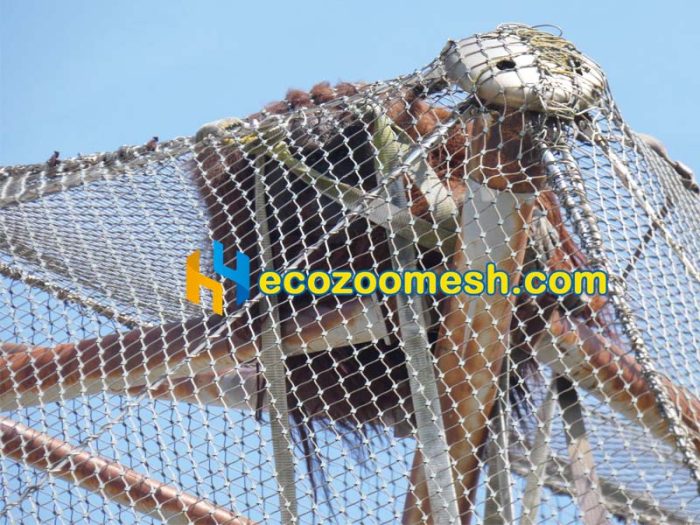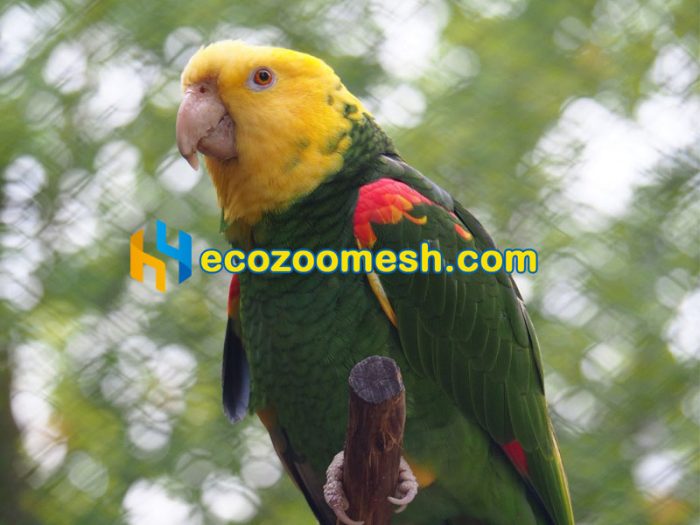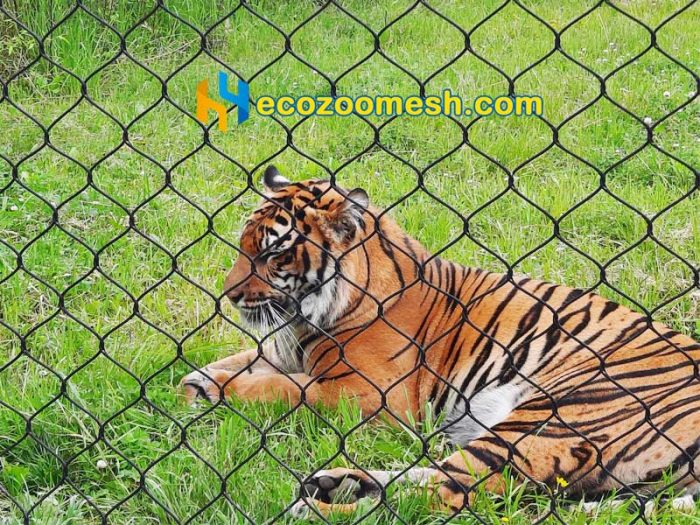Stainless Steel Aviary Mesh Parrot Wire Mesh

Black Aviary Mesh Order Sent
2025-10-10
Stainless Steel Zoo Mesh Shipping
2025-10-23Stainless Steel Aviary Mesh Parrot Wire Mesh
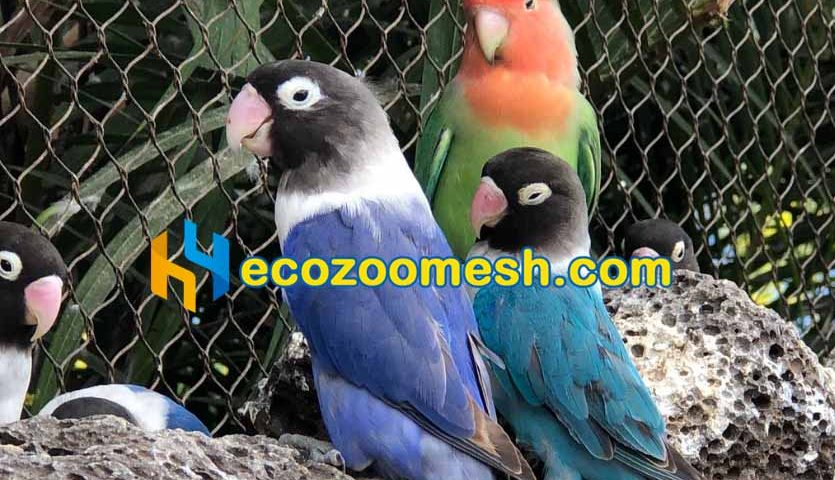
Stainless Steel Aviary Mesh: Building a Safe, Durable, and Beautiful Bird Haven
When envisioning an aviary, whether a sprawling public exhibit or a private sanctuary in your backyard, the primary goal is always the same: to create a secure, healthy, and stimulating environment that allows birds to thrive. The single most critical component determining the success of any aviary is the mesh you choose. While many materials are available, none combine strength, safety, and longevity quite like stainless steel aviary mesh.
This comprehensive guide will delve into why stainless steel woven wire rope mesh has become the gold standard for modern aviary construction. We will explore its unparalleled benefits, key considerations for selection, and how it transforms a simple enclosure into a magnificent, walk-in habitat for both birds and humans.
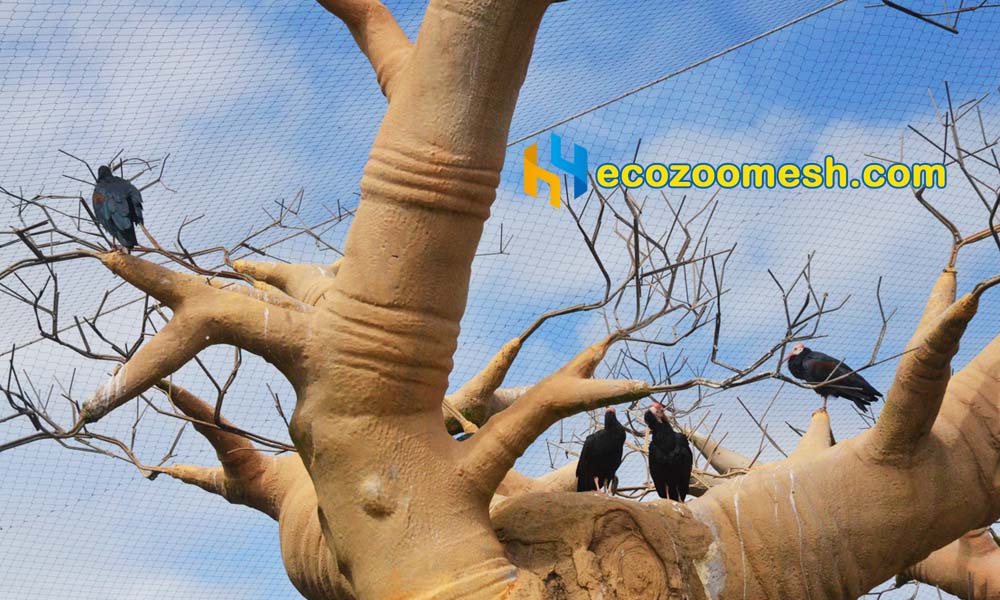
Why the Right Stainless Steel Aviary Mesh is Non-Negotiable
An aviary is more than a cage; it’s a simulated ecosystem. The mesh serves as the perimeter, the sky, and the primary barrier between the birds and the outside world. Its role is multifaceted:
Containment: It must securely house birds, preventing escape.
Protection: It must shield inhabitants from predators and pests.
Safety: It must be non-toxic and physically safe, with no sharp edges or hazardous materials.
Durability: It must withstand constant exposure to the elements—sun, rain, wind, and temperature fluctuations.
Well-being: It should not impede visibility or create a claustrophobic atmosphere.
Failure in any of these areas can lead to tragic consequences. This is why inferior materials like galvanized wire, chicken wire, or plastic netting are risky choices. They can rust, corrode, leach harmful chemicals, or be easily destroyed by determined birds or predators.
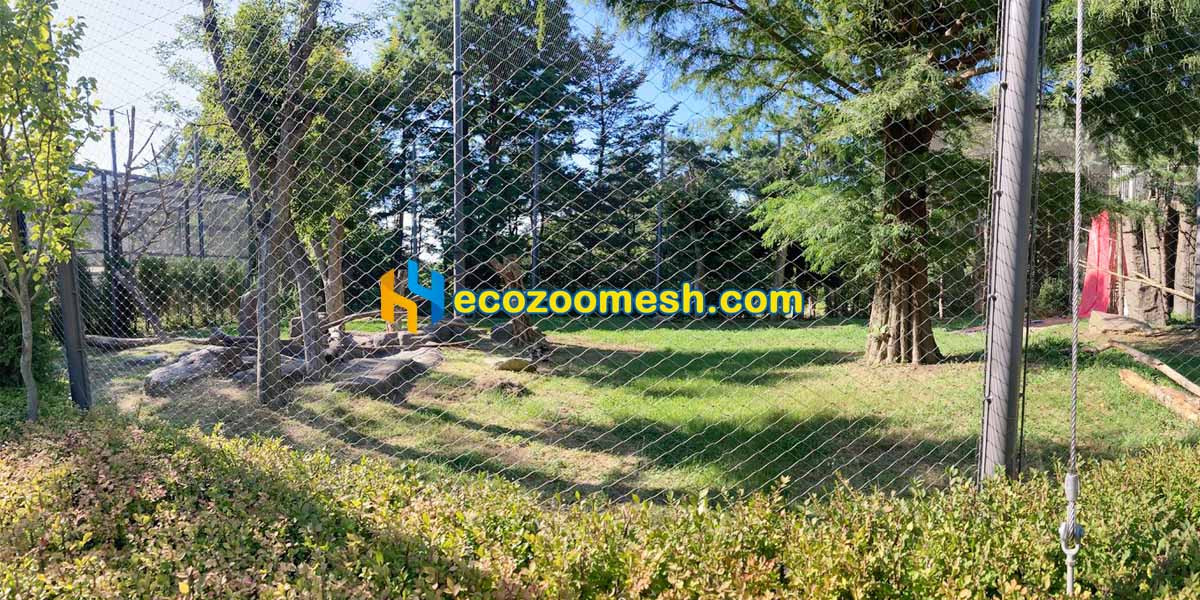
Stainless Steel Aviary Mesh: The Unrivaled Material for Modern Bird Enclosures
Stainless steel aviary mesh, specifically the woven wire rope type manufactured by industry leaders like Hengyi Metal Ecological Mesh, addresses every requirement of a perfect aviary and surpasses them. It is a engineered solution born from an understanding of both structural integrity and avian biology.
Let’s break down the properties that make it so exceptional:
Superior Strength and Chew Resistance
Parrots, macaws, cockatoos, and many other bird species are classified as “climbing birds.” Their powerful beaks are not just for eating; they are tools for exploration, play, and, unfortunately, for testing the limits of their enclosure. A parrot can methodically chew through soft metals and plastics in a shockingly short time.
Stainless steel aviary mesh is manufactured from high-tensile stainless steel cables woven into a uniform grid. This creates a flexible yet incredibly tough barrier that can resist the most persistent chewing attempts. The inherent strength of the steel strands, combined with the interlocking weave, distributes force evenly, preventing localized failure.

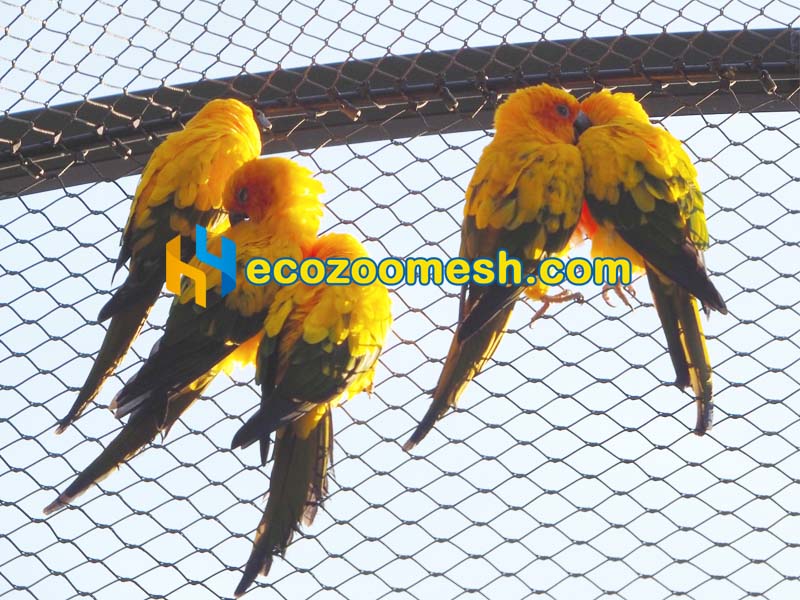
Complete Non-Toxicity and Animal Safety
Birds have extremely sensitive respiratory systems. Galvanized wire, a common but poor alternative, is coated with zinc. When birds chew on this coating, they can ingest zinc, leading to heavy metal poisoning (zinc toxicosis), a serious and often fatal condition.
Stainless steel is inert. It contains no coatings or paints that can flake off and be ingested. It is a solid, homogenous material that is completely non-toxic and safe, even for the most curious and destructive chewers. Furthermore, the weaving process creates smooth, rounded edges at every intersection, eliminating the risk of cuts or abrasions to delicate feet, feathers, and beaks.
Exceptional Longevity and Corrosion Resistance
An aviary is a long-term investment. Replacing mesh every few years due to rust and corrosion is costly and disruptive. Stainless steel aviary mesh is renowned for its rust-resistant properties.
Type 304 Stainless Steel: This is the most common grade and is excellent for most environments. It offers a great balance of durability and cost-effectiveness, resisting rust from moisture and seasonal weather.
Type 316 Stainless Steel: For aviaries located in coastal or high-salinity environments, 316 stainless is the superior choice. Its added molybdenum content provides enhanced resistance to saltwater corrosion, ensuring the mesh remains structurally sound and aesthetically pleasing for decades, even in the harshest conditions.
This longevity makes it an economically wise choice over the lifecycle of the aviary.
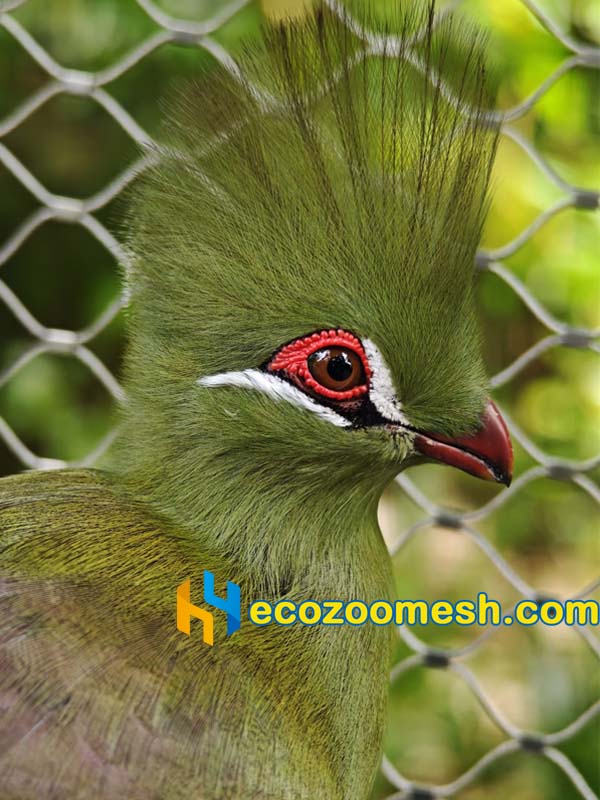
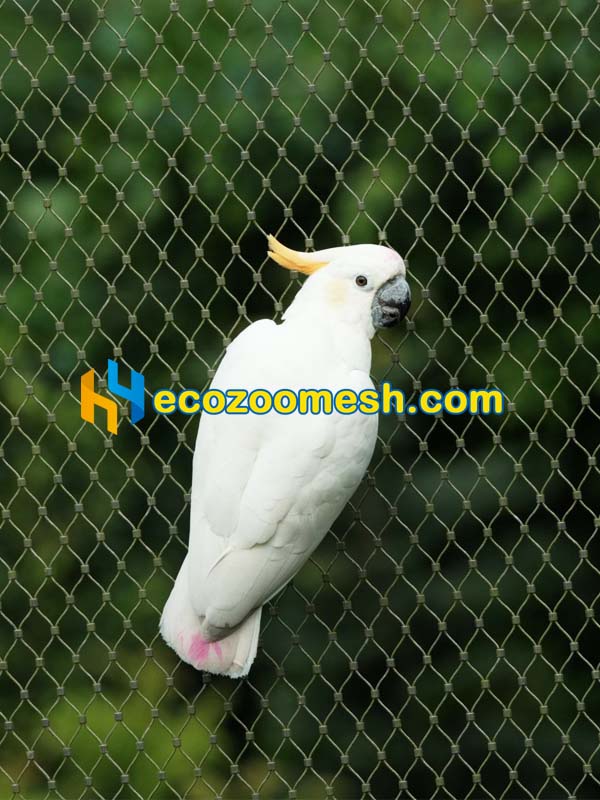
Unobstructed Visibility and an Open Feel
The psychological well-being of both birds and human visitors is paramount. Heavy, opaque materials can make an enclosure feel like a prison. One of the most celebrated features of stainless steel rope mesh is its high open-area percentage.
The fine cables and carefully sized mesh apertures create a virtually transparent barrier. From a distance, the mesh seems to disappear, allowing for breathtaking, unobstructed views of the birds and the interior landscape. This “see-through” effect is crucial for creating an immersive experience in walk-in aviaries, making visitors feel connected to the environment rather than separated from it. For the birds, it provides a clear view of their surroundings, reducing stress and promoting natural behaviors.
Lightweight and Flexible Structural Advantages
Despite its immense strength, stainless steel aviary mesh is surprisingly lightweight. This has significant advantages for structural engineering:
Reduced Support Costs: The minimal weight load means that supporting frameworks (poles, beams) can be lighter and less numerous, reducing material and construction costs.
Design Freedom: Its flexibility allows it to be draped over complex, curved shapes, enabling the creation of beautiful, domed, or free-form aviary structures that are impossible with rigid panels.
Ease of Installation: Compared to heavy-gauge welded mesh, the rope mesh is easier to handle and install, often coming in large, continuous rolls or panels.
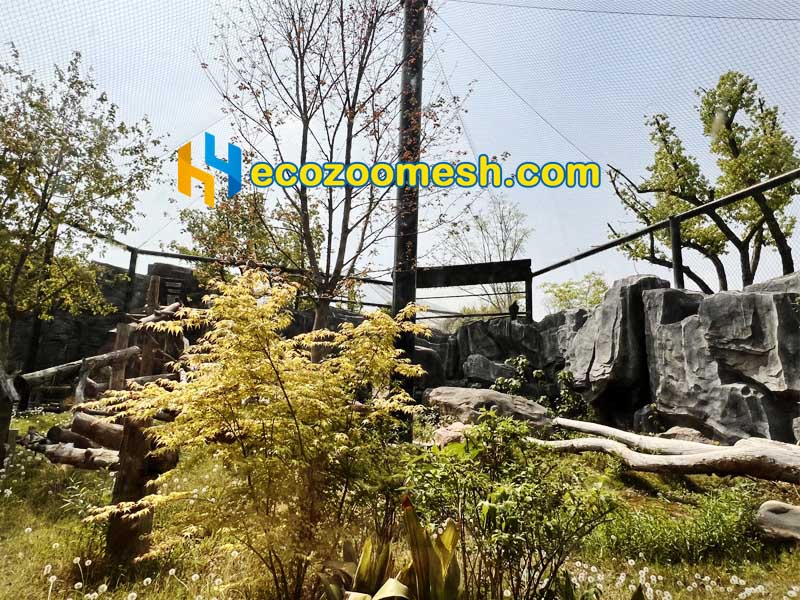
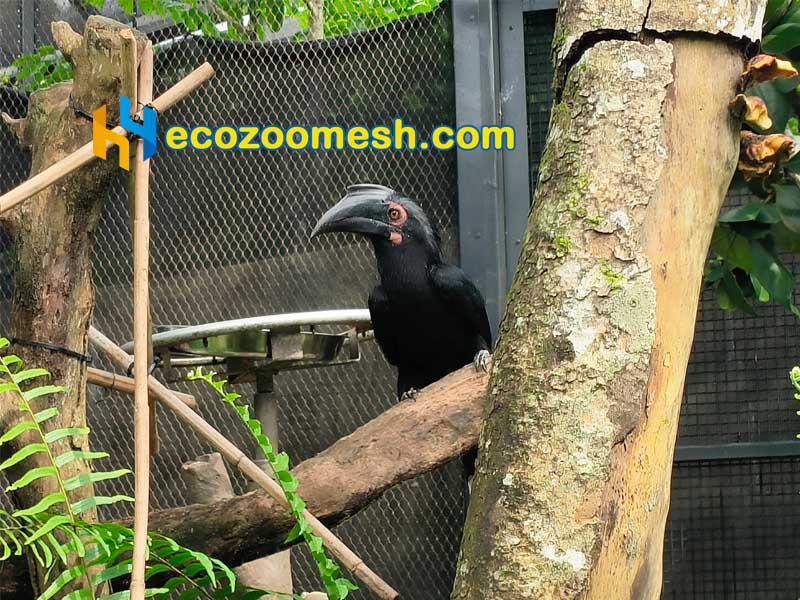
Designing Your Aviary: Key Specifications for Stainless Steel Mesh
Choosing the right stainless steel aviary mesh involves two critical specifications: rope diameter and mesh aperture.
Rope Diameter: The Backbone of Strength
The diameter of the individual stainless steel cables determines the mesh’s overall toughness.
1.2mm Diameter: An excellent choice for smaller parrots (e.g., conures, cockatiels, lovebirds) and finches. It provides ample strength while maintaining a very discreet profile.
1.6mm Diameter: This is the recommended standard for most aviaries housing medium to large parrots, such as African Greys, Amazons, and small macaws. It offers robust chew resistance without sacrificing visibility.
For exceptionally large birds like hyacinth macaws or birds of prey, even thicker diameters (2.0mm or more) may be recommended.
Mesh Aperture: The Key to Safety and Containment
The mesh aperture, or the size of the open spaces between the ropes, is chosen based on the smallest bird in the enclosure. A common mistake is sizing the mesh for the largest bird, which can allow smaller birds to escape or become trapped.
For a Mixed-Species Aviary: Always base your aperture size on the smallest species. A 20mm mesh aperture is a versatile and very safe size. It is suitable for a wide range of birds, from larger parrots down to smaller species, preventing head or body entrapment while ensuring no one can squeeze through.
For Specific Species: If housing only large macaws, a slightly larger aperture (e.g., 25mm-50mm) could be used. For exclusively small finches, a much smaller aperture (e.g., 20mm) would be necessary.
Consulting with an expert, like the team at Hengyi Metal Ecological Mesh, is crucial to match the exact specifications to your avian residents.
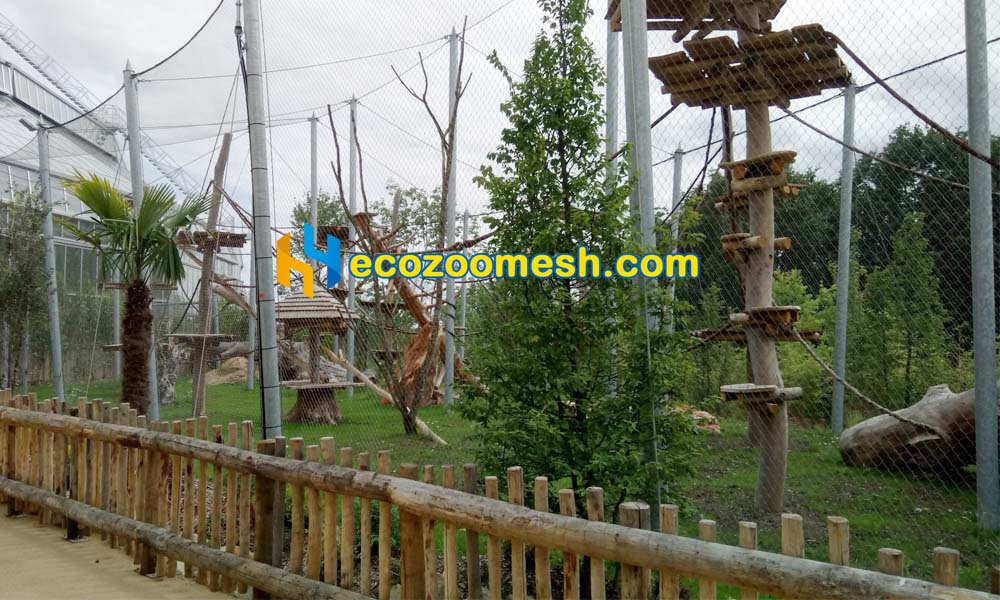
The Walk-In Aviary: A Showcase of Stainless Steel Mesh’s Potential
The “walk-in aviary” represents the pinnacle of aviary design, and stainless steel aviary mesh is the material that makes it possible. This design philosophy removes the traditional “us and them” barrier, fostering a profound connection between humans and birds.
An Immersive Experience: Visitors can walk inside, hear the flutter of wings up close, and experience the vibrant colors and personalities of the birds in a shared space. The transparency of the mesh maintains the illusion of an open sky.
Enrichment for Birds: The vast, uninterrupted flight space allows birds to engage in natural flight patterns, promoting physical health and mental stimulation. The lightweight nature of the roof mesh enables the construction of very large spans, creating a truly voluminous environment.
Structural Simplicity: As highlighted, the entire roof structure can be elegantly simple. The strong, lightweight mesh can be tensioned over a minimal framework, creating a safe, secure, and aesthetically pleasing canopy.
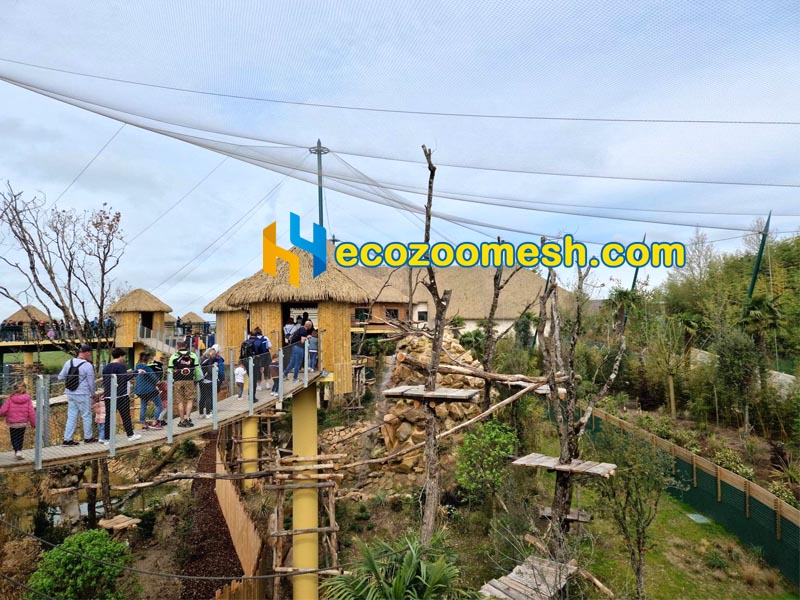
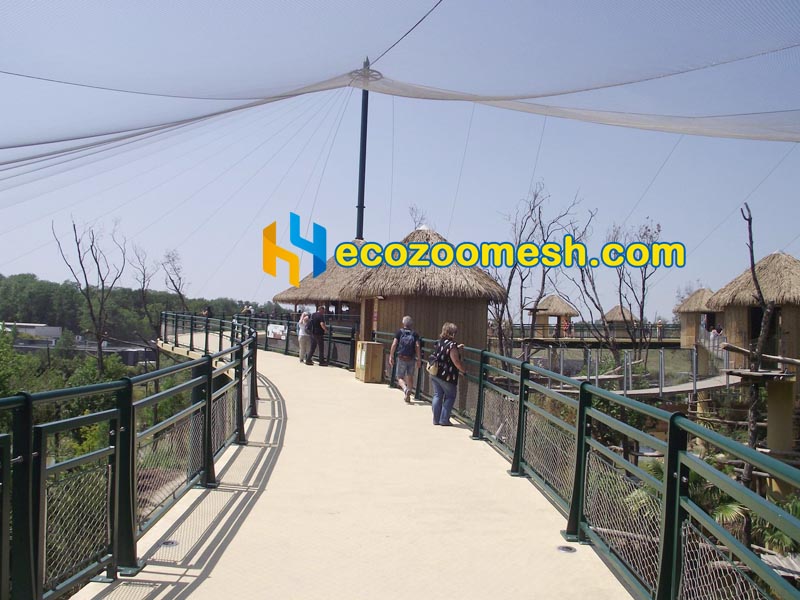
An Investment in Peace of Mind and Beauty
Choosing your aviary mesh is the most important decision you will make. While initial costs for stainless steel aviary mesh may be higher than for substandard materials, it is an investment that pays dividends for a lifetime. It provides unparalleled peace of mind, knowing your birds are safe from toxins, predators, and self-inflicted injury. It offers a beautiful, open habitat that promotes animal welfare and delivers a stunning visual experience for all.
The advantages of stainless steel woven wire rope mesh are simply incomparable. It rejects the outdated notions of enclosures being cumbersome, sealed, and isolating. Instead, it builds a bridge, fostering closer, more respectful, and more magical contact between people and the avian world.
Ready to design the perfect aviary?
Contact Hengyi Metal Ecological Mesh today for a free consultation. Our experts will help you select the ideal stainless steel aviary mesh — with the perfect rope diameter, mesh aperture, and stainless steel grade (304 or 316) — for your specific project, ensuring a safe, durable, and breathtaking habitat for your birds.
Emails: [email protected] / [email protected]


